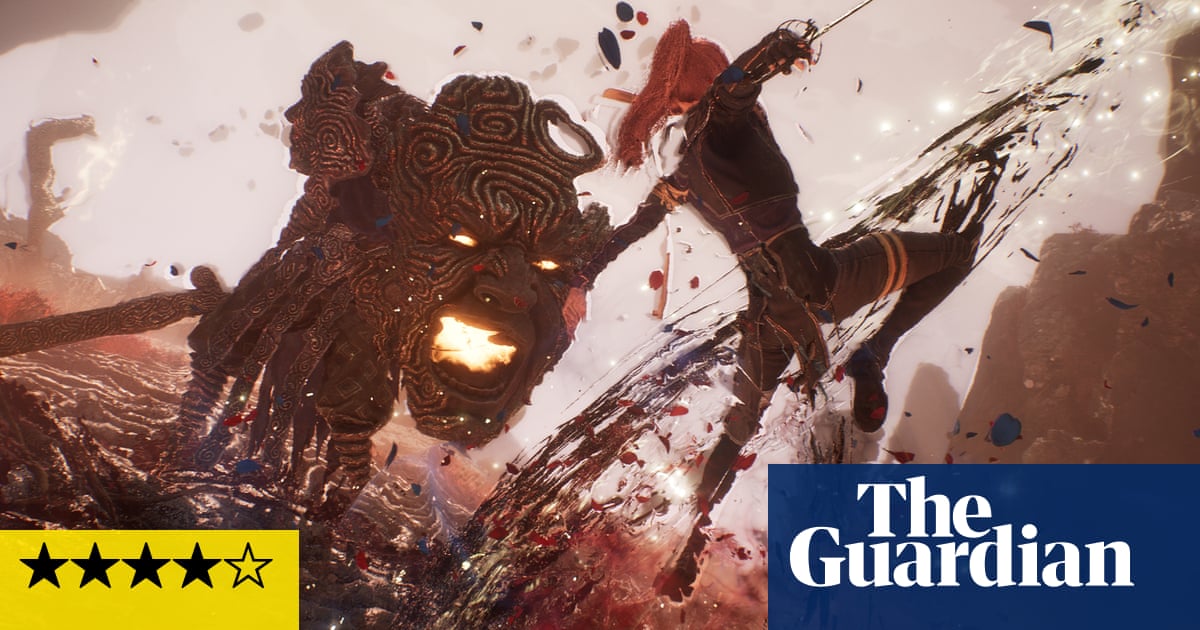When we meet Clair Obscur’s protagonist Gustave, he’s getting ready to say goodbye to his ex-girlfriend, Sophie. Once a year the Paintress, a giant god-like woman visible from across the sea, wakes, paints a number on a large monolith, and in the peaceful town of Lumière, everyone whose age corresponds with the number dies. This process, called the Gommage, has shortened people’s lives for 67 years, and now it’s Sophie’s turn. Immediately after this heart-wrenching goodbye, Gustave and his adopted sister Maelle get ready to set sail as part of Expedition 33, on a journey to defeat the Paintress and end her gruesome cycle.
While stunningly beautiful, the continent you arrive at is no friendly place, and the path to the Paintress is filled with surreal monsters called Nevrons, which you fight in turn-based battles. Characters have a melee attack and a long-range attack, but most importantly, they have a large variety of unique skills including elemental magic attacks and strong attacks with multiple hits that have the chance to stun. Each member of your team has a special way of building up damage even further; Maelle for example uses a defensive, offensive or aggressive combat stance, inspired by fencing, while the magic that Lune wields builds up so-called stains that you can then spend to make other spells more powerful. Add to this long list of optional passive skills called Pictos, and soon you have a wide array of ways to enhance your characters. The interplay between building up action points to use skills, building up damage and defending is really interesting, and I enjoyed trying out different tactics, even as it meant that a lot of my time was spent in menus.
It can feel overwhelming, but each new skill gets introduced gradually, and permanent tool tips in the battle menu helpfully list each skill’s effect and cost. Clair Obscur’s combat can be quite a challenge, however, since battles use a parry and dodge system. If you don’t dodge at least, battles will quickly be over. Successful parries, which have a narrower reaction window than dodging, let characters answer with powerful counters, which can be crucial to beating your foes. Even regular enemies kept me on my toes with their many attacks, but the absolute screen-shaking force of a successful counter felt deeply satisfying every time. I continuously got a kick out of parrying because I’m the right kind of bad at it – it might get boring if you don’t get that hit of dopamine from occasional success, or feel frustrating if you struggle constantly. Enemies also feint incredibly often, which is meant to increase the difficulty of parrying but also lengthens their attacks, sometimes overly so.
Developer Sandfall Interactive has been very open about taking inspiration from Japanese role-playing games. While combat is certainly a prominent example, I saw the influences everywhere: the menu design is as much Persona-inspired as the combat is, the enemies are as surreal as Bloodborne’s gruesome creations. But when it comes to storytelling, Clair Obscur shares the tendency of many JRPGs to over-complicate things.
The dialogue though is well written and acted. Your party goes through some incredibly bad times, but they talk about it candidly and try to support each other as best they can. Optional conversations help you to get to know everyone better – some of Clair Obscur’s best writing is here. It’s the main plot where things eventually get exhausting. For the most part, Clair Obscur is the adult fantasy that Final Fantasy XVI tried to be. But it’s also an enigma wrapped in a mystery, and for hours and hours, it adds new questions and characters until it’s all revealed in an absolute dump of late-game information. Conversations, locations and gameplay repeat themselves in the final third, making things feel artificially lengthened.
Towards the end, Clair Obscur constantly finds more ways to be even sadder than it was mere minutes ago, so unwilling to let you go that it forces you through lengthy boss fights accompanied by a whole soundtrack’s worth of operatic metal. It also culminates in a very frustrating ending that made me question everything I spent hours doing. Everywhere else, from combat to enemy design to music, I appreciated Clair Obscur’s flair for the epic, but too much subterfuge, too many tears, too many fights ultimately made for a seriously fumbled ending.
Clair Obscure: Expedition 33 is out on 24 April; £44.99.
